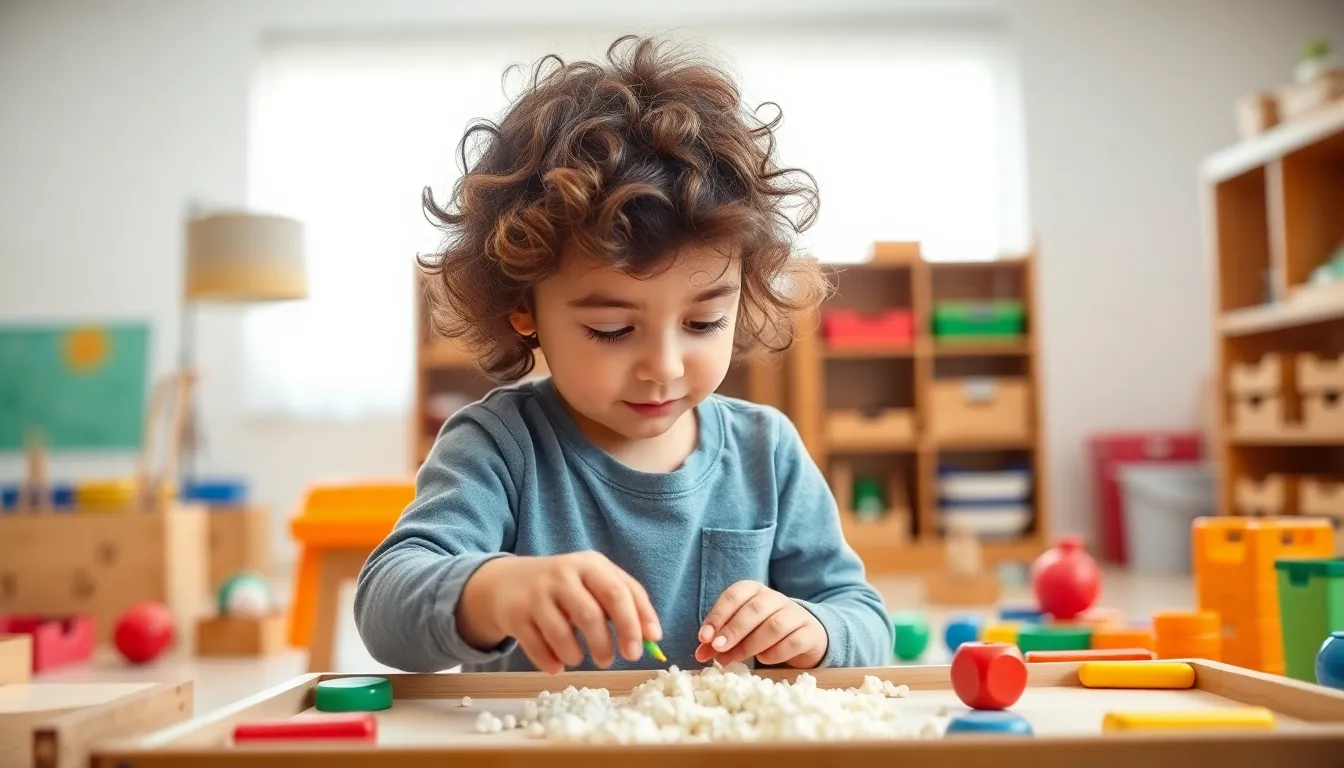The Montessori method has transformed the landscape of education, emphasizing a child-centered approach that nurtures independence and creativity. By fostering a love for learning, this educational philosophy equips children with the skills they need to thrive in an ever-changing world.
In a Montessori environment, children engage in hands-on activities that cater to their unique interests and developmental stages. This guide delves into the principles of the Montessori method, offering insights into its core practices and the benefits it brings to both children and educators. Discover how this innovative approach can create a rich learning experience that inspires curiosity and self-discovery.
Table of Contents
ToggleOverview of Montessori Guide
Montessori education focuses on a structured yet flexible learning environment that encourages children’s natural curiosity. This guide outlines the essential aspects of the Montessori method, detailing its educational philosophy and key principles.
What Is Montessori Education?
Montessori education emphasizes child-led learning and development. Developed by Dr. Maria Montessori, this method promotes exploration and discovery within a prepared environment. Children engage in hands-on activities designed to foster independence, confidence, and a lifelong love for learning. The emphasis on mixed-age classrooms allows younger children to learn from older peers, enhancing socialization and cooperation.
Key Principles of Montessori Approach
- Respect for the Child: Educators value each child’s unique abilities and interests, encouraging them to follow their own learning paths.
- Prepared Environment: Classrooms are designed with age-appropriate materials that cater to children’s developmental stages, facilitating exploration and discovery.
- Individualized Learning: Each child progresses at their own pace, allowing for personalized education that meets specific needs and interests.
- Role of the Teacher: Teachers act as guides or facilitators rather than traditional instructors, promoting autonomy and critical thinking.
- Hands-On Materials: Learning tools are tactile and engaging, enabling children to manipulate materials for better understanding of abstract concepts.
- Focus on Freedom and Choice: Children are encouraged to choose their activities, fostering decision-making skills and intrinsic motivation.
- Holistic Development: The Montessori approach nurtures emotional, social, physical, and cognitive development, promoting well-rounded individuals.
Benefits of Using a Montessori Guide

Montessori guides offer numerous advantages, enhancing both educational outcomes and personal growth for children. These benefits include promoting independence and instilling a lifelong love for learning.
Encouraging Independence
Montessori guides empower children to take charge of their learning experiences. They provide opportunities for decision-making, allowing children to choose activities that align with their interests. Such autonomy fosters self-confidence, enabling children to develop essential life skills like problem-solving and self-discipline. With structured freedom, children manage their tasks and learn to assess their progress, encouraging responsibility for their educational journeys.
Fostering a Love for Learning
Montessori guides create an environment that nurtures curiosity and exploration. They utilize engaging, hands-on materials that make learning enjoyable and relevant. This interactive approach captivates children’s attention and inspires a desire for continued discovery. Additionally, the individualized pace allows children to delve deeper into subjects they find intriguing, cementing a lasting appreciation for knowledge. As a result, children develop intrinsic motivation, making them lifelong learners who seek knowledge beyond traditional classroom settings.
Components of a Montessori Guide
Montessori guides consist of crucial elements that support the implementation of the Montessori method. Two primary components include the curriculum structure and the classroom environment.
Curriculum Structure
The curriculum structure within a Montessori guide emphasizes integrated learning across disciplines. Key subjects such as math, language, science, and cultural studies are interconnected, fostering a comprehensive understanding. Activities are organized by developmental stages, allowing children to explore topics that align with their interests and abilities. The structure includes:
- Self-Directed Learning: Children choose activities based on their preferences, promoting autonomy and intrinsic motivation.
- Hands-On Materials: Concrete materials engage all senses, facilitating deeper comprehension of abstract concepts.
- Mixed-Age Groups: Cohorts of different ages enable peer learning, mentorship, and social skill development.
- Real-World Connections: Incorporating life skills and practical experiences into the curriculum bridges classroom learning with everyday life.
Classroom Environment
The classroom environment serves as a cornerstone of the Montessori approach. This carefully prepared space enhances children’s independence and fosters a love for learning. Important aspects include:
- Accessibility: Materials are within reach, encouraging freedom of choice and exploration.
- Order and Organization: A structured environment allows for easy navigation and promotes self-discipline.
- Natural Elements: Incorporating plants and natural light creates a calming atmosphere, conducive to focus and creativity.
- Dedicated Work Spaces: Individual work areas encourage concentration and a sense of ownership over learning.
These components of a Montessori guide create a nurturing educational landscape, allowing children to thrive and develop essential life skills.
How to Implement a Montessori Guide at Home
Implementing a Montessori guide at home involves creating an environment that promotes independence and hands-on learning. By following key strategies, caregivers can effectively support children’s natural curiosity and growth.
Creating a Montessori-Friendly Space
Creating a Montessori-friendly space requires a purposeful setup that encourages exploration and autonomy. Consider the following aspects:
- Accessibility: Arrange materials within reach of children, allowing them to select activities freely. Use low shelving and containers for easy access.
- Organization: Maintain a tidy environment with clearly defined areas for different activities. Group materials by category to facilitate focused learning experiences.
- Natural Elements: Incorporate natural materials such as wood, plants, and fabric. These elements promote sensory experiences and connect children to the environment.
- Calm Atmosphere: Design spaces with a serene color palette, minimal clutter, and soft lighting. A peaceful setting enhances concentration and focus.
- Work Areas: Create dedicated, quiet workspaces that invite engaged learning. Include tables or mats for individual work and collaborative activities.
Selecting Appropriate Materials
Selecting appropriate materials is essential in fostering a Montessori approach at home. Focus on the following key principles:
- Hands-On Learning: Choose tactile materials that offer sensory experiences. Items like building blocks, puzzles, and counting beads cater to different developmental stages and interests.
- Real-Life Experiences: Include practical life materials such as cooking tools, gardening equipment, and cleaning supplies. These foster responsibility and real-world skills.
- Open-Ended Materials: Utilize open-ended materials like art supplies and construction sets that allow for creativity and imaginative play. These encourage divergent thinking.
- Development Stages: Ensure materials align with children’s developmental abilities. Select age-appropriate items that challenge without overwhelming them.
- Cultural and Diversity Resources: Provide books and materials that reflect various cultures and perspectives to promote inclusivity and global awareness.
By cultivating a Montessori-friendly environment and selecting thoughtful materials, caregivers empower children to learn, explore, and grow independently at home.
Embracing the Montessori method can transform the educational experience for children and caregivers alike. By fostering independence creativity and a love for learning it prepares children for a successful future. The emphasis on hands-on activities and individualized learning not only engages young minds but also nurtures essential life skills.
Implementing Montessori principles at home further extends this enriching experience. Creating a supportive environment allows children to thrive and explore their interests. With the right guidance and resources parents can empower their children to take charge of their learning journey. The Montessori approach is more than just a teaching method; it’s a pathway to lifelong curiosity and growth.




